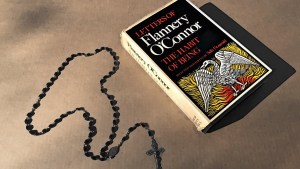The worldwide cultural impact of C.S. Lewis during his own lifetime was phenomenal. This was evident in his being featured on the cover of Time Magazine in September 1947, an accolade which was only bestowed on those who had achieved global celebrity. At this time, he was known as a popular apologist who used his great imaginative gifts to defend the Christian creed.
By 1947, Lewis had written and published bestsellers, which included The Problem of Pain (1940), The Case for Christianity (1942) and Broadcast Talks (also 1942), which would late be expanded, repackaged and republished as Mere Christianity (1952). In addition to these works of non-fiction, Lewis also popularized and defended Christianity in his fictional works, such as The Screwtape Letters (1942), The Great Divorce (1945) and in three theological thrillers in the guise of science fiction, known collectively as The Space Trilogy (1938-45).
If anything, Lewis would become even more popular in the years following his Time Magazine cover. In 1947, he had not even begun writing the seven delightful children’s books, known collectively as The Chronicles of Narnia, which would prove to be perennial bestsellers. The first of these, The Lion, The Witch and The Wardrobe (1950), is regularly listed in the top ten bestselling works of literature ever written.
The secret of Lewis’s success
The secret of Lewis’s phenomenal success was to be found in his uncanny ability to make abstract philosophical and theological concepts accessible to the ordinary untrained reader. It was also to be found in the succinct directness of his writing style, coupled with the literary flourish to present metaphors of pyrotechnic brilliance, and the extraordinary imaginative way that he invented fictional landscapes, bringing them to life with unforgettable characters and inspirational storytelling.
These multifarious and multifaceted gifts are seen with particular potency and clarity in the way in which Lewis depicts life after death. In The Great Divorce he shows that God does not condemn anyone to hell but that the sinners themselves choose to go there. In the end, Lewis tells us, there are only two types of people. There are those who say to God, “thy will be done,” and those to whom God says, “thy will be done.” Having given us the freedom to choose, he gives us the freedom to choose to refuse him forever, if we insist on doing so.
“Every chapter better than the one before”
Having shown us Hell (and Purgatory) in The Great Divorce, Lewis offers us a sublime intimation of the beauty of Heaven in the climax to The Last Battle, the final volume of The Chronicles of Narnia. On the final page of this most wonderful of stories, Aslan tells the children that there was a real railway accident in their own world and that they are dead, “as you used to call it in the Shadowlands.” And yet this death leads to the true fullness of life. “The term is over: the holidays have begun,” Aslan proclaims. “The dream is ended: this is the morning.”
What follows is one of the most beautiful insights into the heavenly home that awaits us:
And as He spoke He no longer looked to them like a lion; but the things that began to happen after that were so great and beautiful that I cannot write them. And for us this is the end of all the stories, and we can most truly say that they all lived happily ever after. But for them it was only the beginning of the real story. All their life in this world and all their adventures in Narnia had only been the cover and the title page: now at last they were beginning Chapter One of the Great Story which no one on earth has read: which goes on forever: in which every chapter is better than the one before.

Convinced he would be forgotten
Having considered the way that Lewis sees life after death in the eternal sense, let’s ponder the way that he saw life after death in the temporal sense. He was convinced that he would be forgotten within a generation or so of his death and that his many works would suffer a similar fate. How wrong he was!
The C.S. Lewis phenomenon did not end with his death, nor did it wane or fade. On the contrary, it seems to wax more brightly than ever. It would be no exaggeration to speak in terms of a C.S. Lewis industry. His works are being published and republished in countless new editions and in numerous languages. He is equally popular among Evangelical Christians and Catholics, and his evergreen Narnia books retain their popularity in the broader secular market.
The good news is that there is truly life after death, not merely for the eternal soul of C.S. Lewis but for the books that he wrote. For this great gift of Lewis’s perennial and living presence, we should all be truly thankful.



